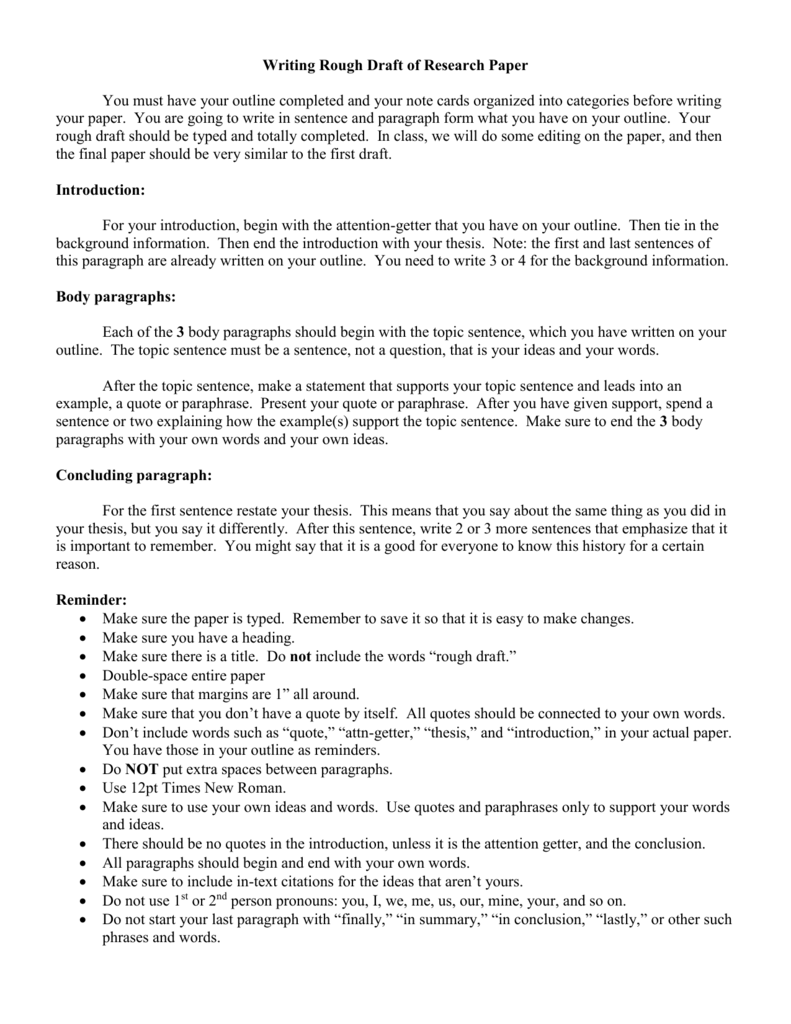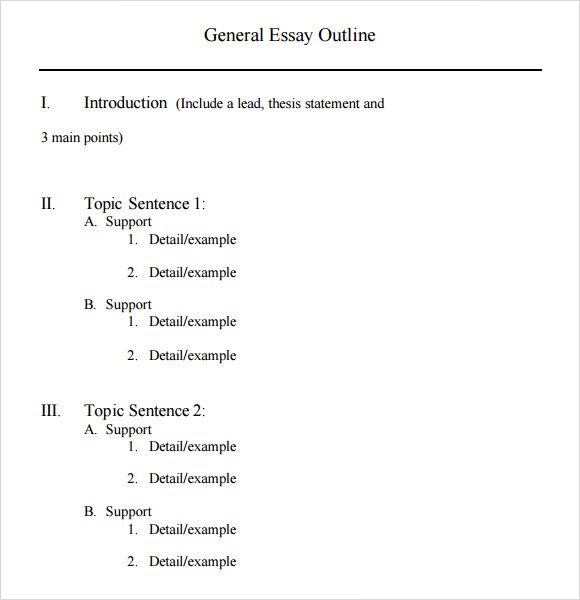

When you paraphrase material from a source, restate the information from an entire sentence or passage in your own words, using your own original sentence structure.
#ROUGH DRAFT OUTLINE EXAMPLE HOW TO#
In the next few sections, you will learn how to use these techniques in the body of your paper to weave in source material to support your ideas. At the sentence level, you will need to think carefully about how you introduce paraphrased and quoted material.Įarlier you learned about summarizing, paraphrasing, and quoting when taking notes. You will also include sentences that transition between ideas from your research, either within a paragraph or between paragraphs. You will use topic sentences in your paragraphs to make sure readers understand the significance of any facts, details, or quotations you cite. In the body paragraphs of your paper, you will need to integrate ideas carefully at the paragraph level and at the sentence level. They define and limit your topic and place your research in context. The introduction and conclusion function like the frame around a picture. You have already taken a step in the right direction by writing your introduction. However, you also need to support your ideas with research, or they will seem insubstantial.

Your paper must explain what you think, or it will read like a disconnected string of facts and quotations. One of the challenges of writing a research paper is successfully integrating your ideas with material from your sources. An effective writer might conclude a paper by asking a new question the research inspired, revisiting an anecdote presented earlier, or reminding readers of how the topic relates to their lives. That helps keep your ideas fresh for your readers. Restate it in different words that reflect the new perspective gained through your research. The conclusion should not simply echo the introduction or rely on bland summary statements, such as “In this paper, I have demonstrated that.…” In fact, avoid repeating your thesis verbatim from the introduction. No matter when you compose the conclusion, it should sum up your main ideas and revisit your thesis. No process is absolutely right or absolutely wrong find the one that best suits you. Other writers prefer to write their conclusion at the end of the paper, after writing the body paragraphs. However, this method may not work for all writers. For this reason, some writers prefer to write their conclusions soon after they have written their introduction. In your conclusion, you recap where they have been. In your introduction, you tell readers where they are headed.

Note how Jorge progresses from the opening sentences to background information to his thesis. Read the first draft of his introduction.

Jorge decided to begin his research paper by connecting his topic to readers’ daily experiences. Think of your thesis as a signpost that lets readers know in what direction the paper is headed. From there, the writer builds toward a thesis, which is traditionally placed at the end of the introduction. The next few sentences place the opening in context by presenting background information. A connection between your topic and your readers’ experiences.A brief anecdote that illustrates a larger concept.Many writers like to begin with one of the following catchy openers: The introduction should get readers’ attention, provide background information, and present the writer’s thesis. There are several approaches to writing an introduction, each of which fulfills the same goals.


 0 kommentar(er)
0 kommentar(er)
